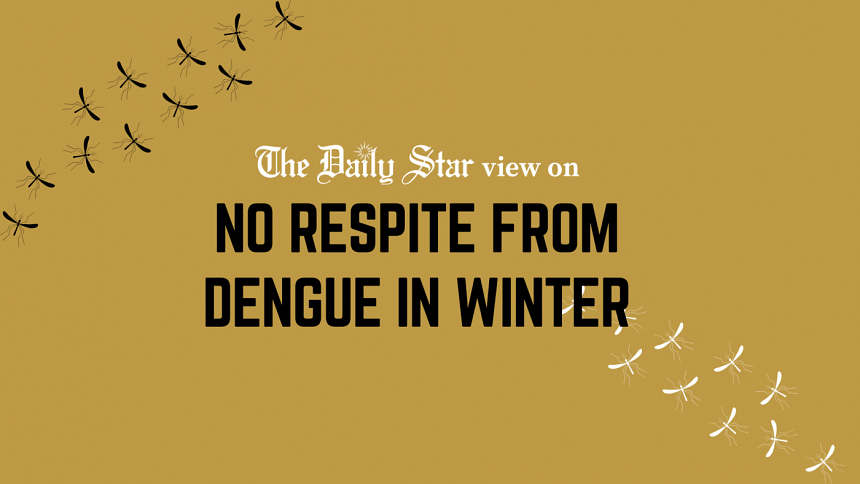Dengue still raging on

Despite the onset of winter, dengue cases are still being recorded in the thousands in the country. Just a decade ago, the season rarely witnessed the mosquito-borne disease; so what has changed now?
Dengue in autumn-winter period started becoming a visible phenomenon last year, with as many as 19,334 cases and 113 deaths recorded in November. Despite repeated warnings from experts, the authorities failed to take the necessary measures to tackle future outbreaks, and as a result, the situation this November is much worse, as cases have already crossed 14,000 with over 80 deaths. Although infections seem to be tapering off compared to the previous three months, there are still many suffering from this avoidable crisis, which is unacceptable.
A key reason why we are seeing so many cases in winter is because of warming temperatures, falling humidity levels and heavier rainfall, all resulting from climate change. For Aedes mosquitoes, the ideal breeding temperature is 20-30 degrees Celsius, and we have seen in recent times that winter has entered that range. According to a World Bank report, we will see increasingly more dengue cases due to the suitable climatic conditions. However, this worrying reality has apparently yet to raise concern among the relevant authorities here. Despite experts calling for year-round action, when the Aedes population declined after October last year, the authorities did not take any initiative to contain the breeding. On top of that, measures were eased at the beginning of this year. All these missteps have contributed to the ongoing crisis.
Besides, the health ministry has not created a proper database. As many as 16,000 public and private hospitals, clinics, diagnostic centres and blood banks across the country are providing dengue care, but the health directorate's daily dengue bulletin only uses data from 138 such facilities. In absence of precise and specific data, such as location and serotype distribution, any vector-control programme is bound to fail. Additionally, the city corporations frequently try to skirt their responsibilities, sometimes by blaming the citizens and sometimes by taking initiatives that have been proven to be ineffective.
To prevent a similar crisis from occurring next year, all government agencies must prioritise coming up with an action plan to combat dengue. The met office has a key role to play here, as it can give warnings and information about conducive climate for dengue transmission, which the authorities can use to prepare appropriate measures. Active clusters of Aedes mosquitoes must be identified during the lean period of dengue (November-April) to prevent future outbreaks, and the authorities can even prepare for a dengue inoculation programme with the available vaccines in the market. With such measures, we hope that this crisis will cease to exist next winter.

 For all latest news, follow The Daily Star's Google News channel.
For all latest news, follow The Daily Star's Google News channel. 











Comments